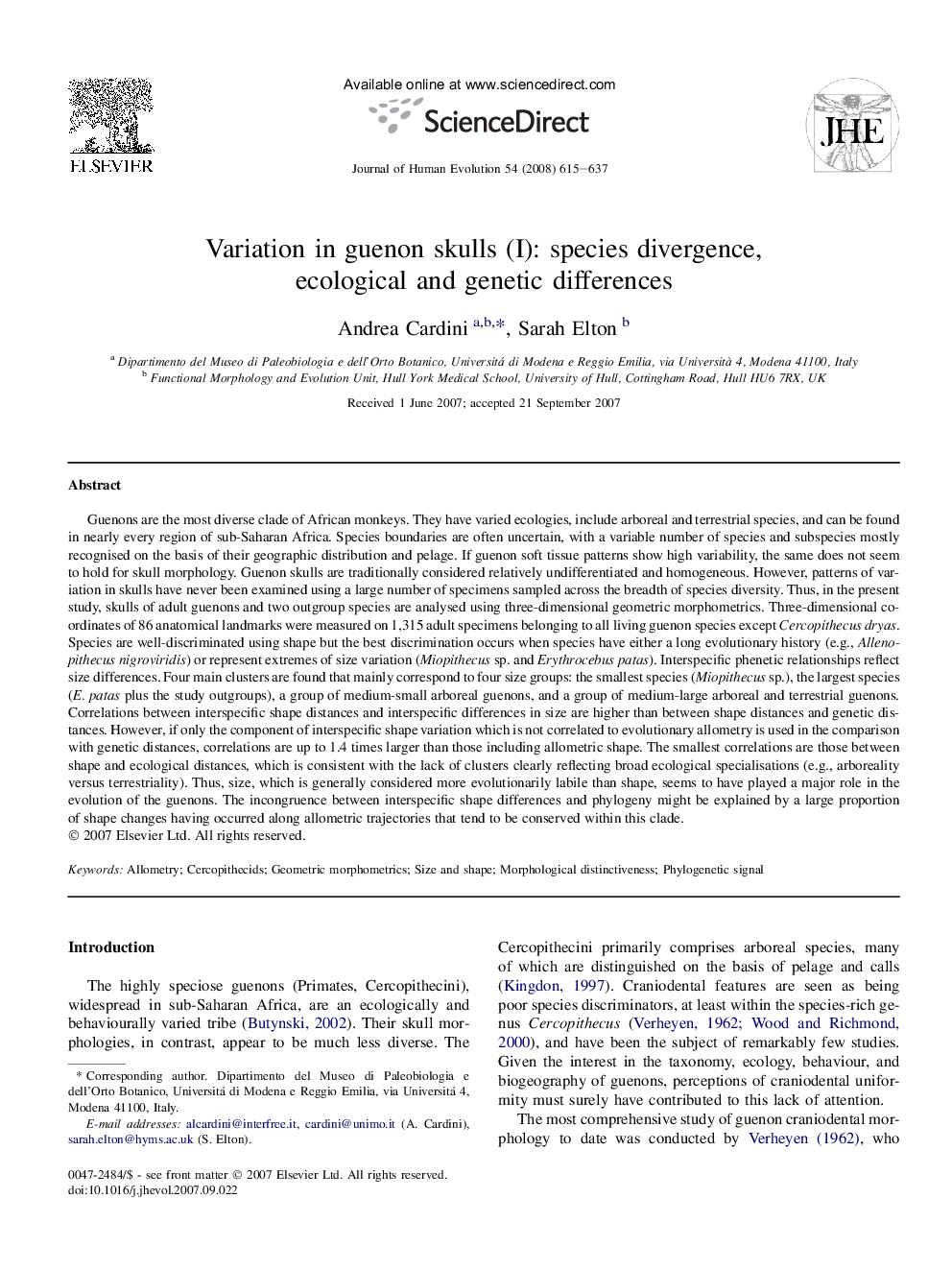| کد مقاله | کد نشریه | سال انتشار | مقاله انگلیسی | نسخه تمام متن |
|---|---|---|---|---|
| 4557177 | 1329532 | 2008 | 23 صفحه PDF | دانلود رایگان |

Guenons are the most diverse clade of African monkeys. They have varied ecologies, include arboreal and terrestrial species, and can be found in nearly every region of sub-Saharan Africa. Species boundaries are often uncertain, with a variable number of species and subspecies mostly recognised on the basis of their geographic distribution and pelage. If guenon soft tissue patterns show high variability, the same does not seem to hold for skull morphology. Guenon skulls are traditionally considered relatively undifferentiated and homogeneous. However, patterns of variation in skulls have never been examined using a large number of specimens sampled across the breadth of species diversity. Thus, in the present study, skulls of adult guenons and two outgroup species are analysed using three-dimensional geometric morphometrics. Three-dimensional coordinates of 86 anatomical landmarks were measured on 1,315 adult specimens belonging to all living guenon species except Cercopithecus dryas. Species are well-discriminated using shape but the best discrimination occurs when species have either a long evolutionary history (e.g., Allenopithecus nigroviridis) or represent extremes of size variation (Miopithecus sp. and Erythrocebus patas). Interspecific phenetic relationships reflect size differences. Four main clusters are found that mainly correspond to four size groups: the smallest species (Miopithecus sp.), the largest species (E. patas plus the study outgroups), a group of medium-small arboreal guenons, and a group of medium-large arboreal and terrestrial guenons. Correlations between interspecific shape distances and interspecific differences in size are higher than between shape distances and genetic distances. However, if only the component of interspecific shape variation which is not correlated to evolutionary allometry is used in the comparison with genetic distances, correlations are up to 1.4 times larger than those including allometric shape. The smallest correlations are those between shape and ecological distances, which is consistent with the lack of clusters clearly reflecting broad ecological specialisations (e.g., arboreality versus terrestriality). Thus, size, which is generally considered more evolutionarily labile than shape, seems to have played a major role in the evolution of the guenons. The incongruence between interspecific shape differences and phylogeny might be explained by a large proportion of shape changes having occurred along allometric trajectories that tend to be conserved within this clade.
Journal: Journal of Human Evolution - Volume 54, Issue 5, May 2008, Pages 615–637